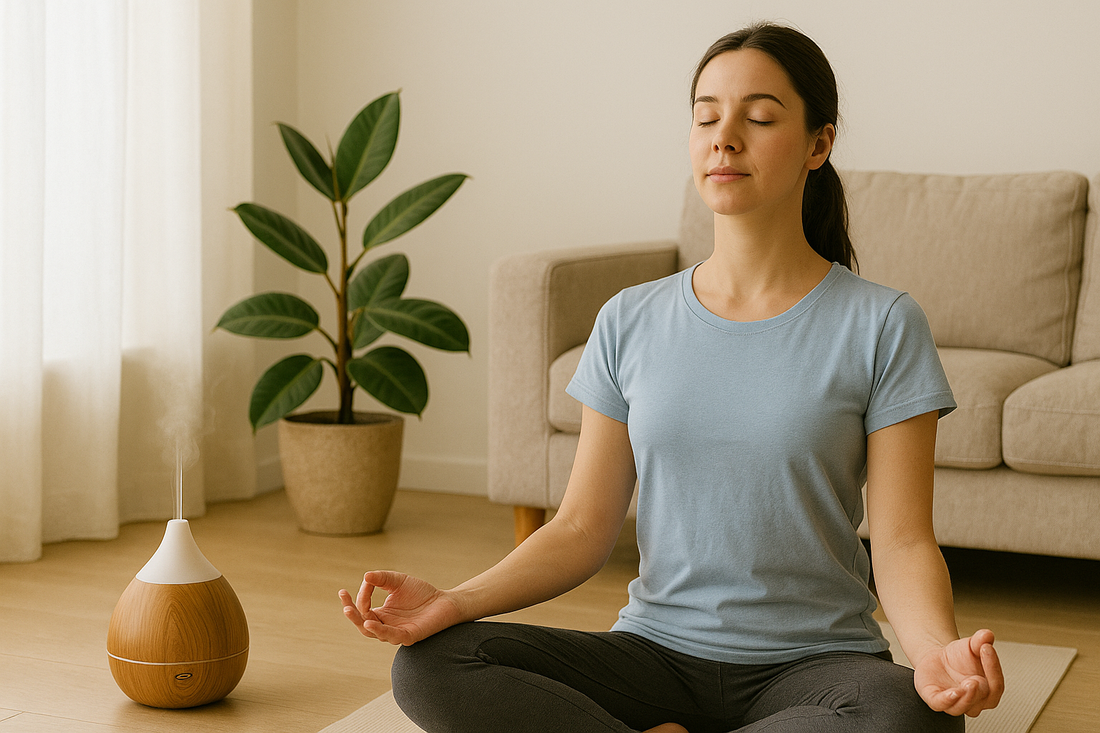
Breathing Exercises to Reduce Stress
In today’s fast-paced world, stress has become an inevitable part of daily life.
Our bodies respond to constant pressure by increasing heart rate, tension, and anxiety levels — but one simple act can bring it all back into balance: breathing.
Breathing is more than just a physical necessity; it’s a tool that directly affects our nervous system.
Through intentional breathing exercises, you can calm your mind, lower stress hormones, and restore focus — all without needing any equipment or medication.
1. The Science Behind Breathing and Stress Relief
When you’re stressed, your body activates the “fight-or-flight” response, releasing cortisol and adrenaline.
Deep, controlled breathing reverses that reaction by stimulating the parasympathetic nervous system, which promotes relaxation and balance.
In short:
• Shallow breathing = tension and anxiety
• Deep, rhythmic breathing = calm and clarity
If you’re new to breathing routines, PrimeVita’s Meditation & Breathing Trainers can help guide timing and rhythm through gentle vibrations or visual cues, allowing you to stay consistent without overthinking.
2. Five Proven Breathing Techniques to Reduce Stress
Here are simple, science-backed breathing exercises you can practice anywhere:
🟩 1) Box Breathing (4-4-4-4 Method)
• Inhale for 4 seconds → Hold for 4 → Exhale for 4 → Hold for 4.
This Navy SEAL–approved method stabilizes the heart rate and instantly lowers anxiety.
🟩 2) Diaphragmatic Breathing (Belly Breathing)
• Place one hand on your stomach and the other on your chest.
• Breathe in deeply through your nose, letting your belly rise.
This technique increases oxygen flow and triggers the body’s relaxation response.
🟩 3) Alternate Nostril Breathing (Nadi Shodhana)
• Inhale through your left nostril, exhale through your right, and switch.
This yogic breathing technique balances both hemispheres of the brain, improving focus and emotional control.
🟩 4) 4-7-8 Breathing for Sleep
• Inhale 4 seconds → Hold 7 → Exhale 8.
This method slows the heart rate and promotes restfulness — perfect before bedtime.
🟩 5) Guided Breathing Practice (Using Smart Trainers)
Pair traditional methods with Meditation & Breathing Trainers for accurate pacing and mindfulness.
Consistent guidance helps beginners form long-term habits.
3. Creating a Daily Breathing Routine
To truly experience results, consistency matters more than intensity.
Here’s a simple routine you can follow:
Morning: 5 minutes of Box Breathing to start your day clear and focused.
Afternoon: 5 minutes of Diaphragmatic Breathing to reset mid-day stress.
Before Bed: 4-7-8 Breathing to release tension and prepare for deep sleep.
Enhance your environment with Aromatherapy Diffusers & Oils — lavender, chamomile, or eucalyptus scents amplify relaxation and help you transition into calm states more easily.
And keep a Fitness Towel (Quick-Dry) handy to maintain comfort during your practice, especially post-workout or meditation sessions.
4. Supporting Mindful Recovery
Stress often builds up not only in the mind but also in the body.
Tight muscles and shallow breathing go hand-in-hand.
After breathing sessions or workouts, use Foam Rollers & Massage Balls to release physical tension and promote deeper relaxation.
Combining breathwork with physical recovery tools helps both body and mind unwind together — a holistic approach to true wellness.
5. FAQs: Breathing & Stress Relief
Q1. How many minutes should I practice each day?
Even 5 minutes, two or three times daily, can significantly lower cortisol levels.
Q2. Can I do breathing exercises before or after workouts?
Yes — before workouts to improve focus, and after to speed up recovery and reduce fatigue.
Q3. Can breathing help with sleep?
Absolutely. Slow rhythmic patterns such as 4-7-8 breathing are clinically proven to ease insomnia and anxiety before bedtime.
Q4. How long until I feel results?
Most people notice immediate relief within minutes, with long-term benefits appearing in 2–4 weeks of daily practice.
💨 Conclusion: Calm Is Built, One Breath at a Time
Breathing exercises are simple, accessible, and powerful.
They require no equipment — only awareness and intention.
When combined with supportive tools like PrimeVita’s Meditation & Breathing Trainers and Aromatherapy Diffusers, you transform breathing from an automatic action into a daily ritual of peace.
Remember: calm isn’t a coincidence — it’s a skill you can practice.
And it all starts with your next breath.
🏷️ Recommended PrimeVita Collections ↗
• Meditation & Breathing Trainers
• Aromatherapy Diffusers & Oils


